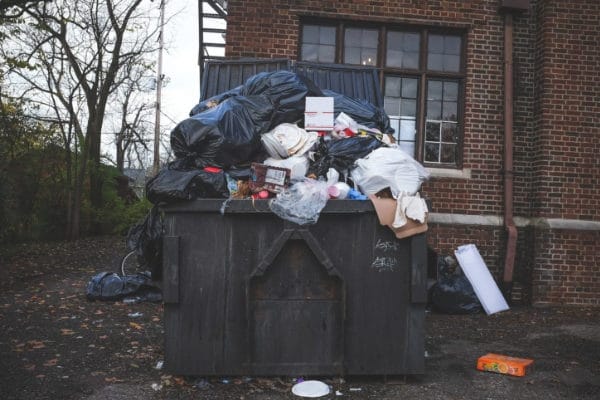How easy is it to make your operation more sustainable?
Being sustainable shouldn’t just be lip service – it should form part of your business philosophy, as more and more consumers demand food with green credentials.
When the world’s fast-food behemoths start to spell out their intention to go greener, it’s clear that sustainability is no longer just a buzzword but a concept that can be ignored only at the food industry’s peril.
McDonald’s recently announced that by 2025, all its packaging would be from renewable, recyclable or certified sources, while Starbucks pledged that it will design, build and operate 10,000 stores in the next six years that run with a high level of commitment to energy efficiency, water stewardship and renewable energy.
These changes are being driven by consumer demand for more accountability around the food they eat, particularly from Millennials and Gens X and Y, who take their eco-credentials seriously. A survey by restaurant reservation group Open Table found that some 76 per cent of 18- to 24-year-old Australians say sustainably sourced foods are important to their dining experience.
But how do restaurants make sustainability a core value? How does adopting green practices affect the bottom line? And just how hard is it to “go green”?
“Operators tell us that it is daunting to know where to start without creating complexity in the workplace, which can cost time and money,” says Sally Neville, deputy CEO of the Restaurant & Catering Industry Association of Australia. This is a particular challenge for outfits which are already in existence, she says. “As an example, most businesses need to retrofit waste solutions as waste may not have been considered in the initial venue design.”
That wasn’t the case for chef Charlie Carrington, who opened his first Melbourne restaurant, Atlas, in 2016, and his second, Colour’s Kitchen, in 2017. Carrington began both kitchens with a sustainable, minimal waste ethos.
Carrington’s aim is to make his offering completely organic – or as close to it as possible. “That hasn’t been as easy as we thought,” he says. “All our seafood and meat are organic, but with veg and dry storage, it’s about getting the best you can.”
Plastic, the curse of many commercial kitchens, is kept to a bare minimum. “We ask our suppliers for everything in cardboard boxes,” Carrington says. “Then once they drop it off, we pack it down into our own containers then and there and give them the boxes back. Dry storage is where we struggle, as it’s not always possible to do that.
“We’re trying to get the meat suppliers on board by giving them our containers, but a lot of government regulations mean they have to be in single-use plastic. So it’s not always the suppliers that are the issue – often it’s the legislation on food safety that stops them.”
Carrington is aware of the complexities of sustainability for the sector. “As we’ve gone on, there are certain things we’d love to do that just aren’t feasible and there are certain things that do work, like composting,” he says. “But every restaurant is different – what works for a smaller place like us which might only do 400 covers a week doesn’t necessarily work for places that might do 400 to 600 a day.”
———
One of the simplest places to begin is by looking at food waste. Australian restaurants contribute about 140,000 tonnes of waste to landfill every year, a figure that not only reflects a huge loss of money for businesses, but also a giant impact on the environment.
It’s why the NSW Government’s Environment Protection Authority set up the Your Business is Food program, which works with the state’s food providers to initiate simple food-waste reduction initiatives , and which has, on average, delivered a 21 per cent saving to businesses who’ve adopted recommended practices.
“Most restaurants don’t think they waste food,” says Amanda Kane, the EPA’s manager of organics. “But when we go in and do a review, measuring waste at the preparation, plating and storage stages, it’s clear just how much waste there actually is.”
Solutions don’t have to be complex. Suggestions include offering smaller-sized portions to customers as well as doggy bags (something consumers “really really like”, says Kane), ordering pre-cut meat (“it’s more cost-effective, you have less waste and you save time in the kitchen”), ordering less food more frequently and using up stock in specials. One of the businesses using the program, the Rose & Crown Hotel in Sydney’s Parramatta, reduced its food waste by 50 per cent by instituting lunch-time specials using produce it had in over-supply.
“We go in, we measure waste and then we suggest one or two simple things,” Kane says. “Maybe changing the menu to be more seasonal or introducing more entree-sized meals. Once they do those couple of things, then they’re looking for the next couple of things to do. It’s not about overextending staff, but doing what you can, finding the positiveness in it and then moving on to the next thing.”
With research by UK group Food Waste Recycling Action Plan showing that there’s a 14-1 return on every dollar spent on addressing food waste, concerns about sustainability equalling increased costs don’t really hold water, Kane says.
“Businesses have to pay for their waste collection and food waste tends to be the majority of waste in bins … so adopting good practices means you save costs on collection, save money by making the most of the food you buy and improve the efficiency of your purchasing practices.”
All of which is good not only for your bottom line, but for the environment as well.
To keep up to date with food industry news and Fine Food Australia updates, subscribe here.
-
Subscribe to stay up to date
- Register


